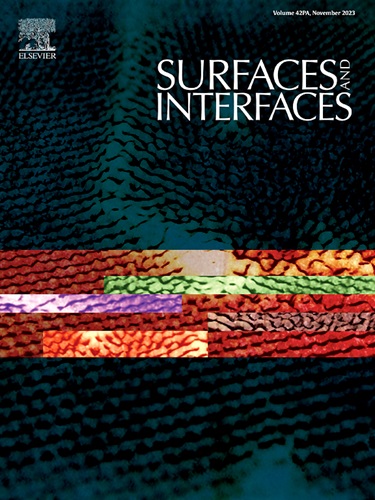溶液处理有机纳米结构阵列:从纳米制造到应用
IF 5.7
2区 材料科学
Q2 CHEMISTRY, PHYSICAL
引用次数: 0
摘要
集成光电器件是现代信息技术的基础。与无机材料相比,有机纳米结构材料具有光谱可调性、溶液可加工性、优异的机械柔韧性和较低的制造成本等固有优势,具有巨大的应用潜力。为了实现高性能的有机电子器件,必须制备具有高结晶性和精确排列的大面积有机单晶阵列。然而,溶液加工方法,包括溶液剪切、喷墨印刷、蘸笔光刻和纳米印迹光刻,由于“咖啡环”效应的限制而面临挑战,这往往导致传质过程无序和晶界缺陷。因此,有机纳米结构阵列的制备仍然具有挑战性。在本文中,我们首先回顾了有机纳米结构阵列的溶液加工技术,包括喷墨印刷、蘸笔光刻、纳米压印光刻、叶片涂层和毛细管桥光刻。随后,我们总结了使用这些技术制造的有机阵列的各种应用,包括光电探测器,太阳能电池,有机激光器,有机发光二极管(oled)和晶体管。最后,我们分析了有机纳米结构阵列的发展现状及其器件应用,并对未来的发展前景进行了展望。本文章由计算机程序翻译,如有差异,请以英文原文为准。
Solution-processed organic nanostructure arrays: From nanofabrication to applications
Integrated optoelectronic devices serve as the foundation of modern information technology. Compared to the inorganic materials, the organic nanostructure materials possess the inherent advantages, including spectral tunability, solution processability, excellent mechanical flexibility, and low fabrication costs, demonstrating significant application potential. To realize the high-performance organic electronic devices, it is essential to prepare large-area organic single-crystal arrays with high crystalline and precise alignment. However, solution-processed methods, including solution shearing, inkjet printing, dip-pen lithography, and nanoimprinting lithography, face challenges due to limitations caused by the "coffee-ring" effect, which often leads to disordered mass transfer processes and grain boundary defects. Consequently, the preparation for the organic nanostructure arrays still remains challenging. In this paper, we first review solution-processed fabrication techniques for organic nanostructure arrays, including inkjet printing, dip-pen lithography, nanoimprinting lithography, blade coating, and capillary bridge lithography. Subsequently, we summarize various applications of organic arrays fabricated using these techniques, including photodetectors, solar cells, organic lasers, organic light-emitting diodes (OLEDs), and transistors. Finally, we analyze the current development status of organic nanostructure arrays as well as their device applications and provide perspectives on future prospects.
求助全文
通过发布文献求助,成功后即可免费获取论文全文。
去求助
来源期刊

Surfaces and Interfaces
Chemistry-General Chemistry
CiteScore
8.50
自引率
6.50%
发文量
753
审稿时长
35 days
期刊介绍:
The aim of the journal is to provide a respectful outlet for ''sound science'' papers in all research areas on surfaces and interfaces. We define sound science papers as papers that describe new and well-executed research, but that do not necessarily provide brand new insights or are merely a description of research results.
Surfaces and Interfaces publishes research papers in all fields of surface science which may not always find the right home on first submission to our Elsevier sister journals (Applied Surface, Surface and Coatings Technology, Thin Solid Films)
 求助内容:
求助内容: 应助结果提醒方式:
应助结果提醒方式:


